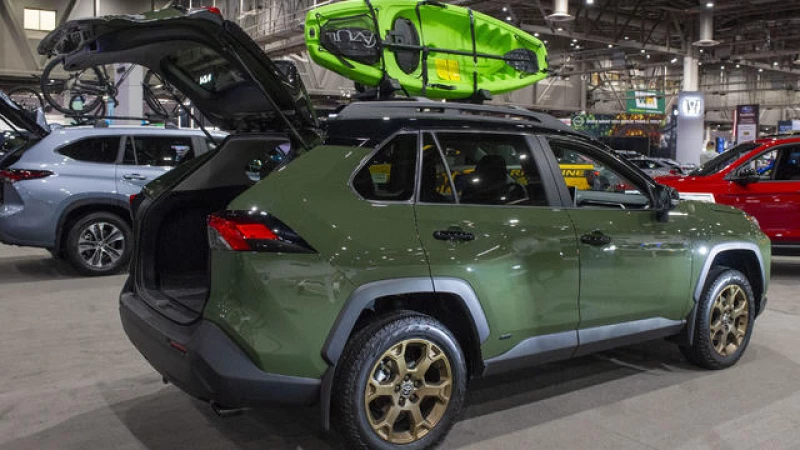The Biden administration announced new tailpipe emission standards for new passenger cars that aim to cut over 7 billion tons of carbon emissions, as well as other harmful air pollutants.
The standards will apply to new passenger cars and light-duty trucks, beginning with model year 2027 through 2032.
The Environmental Protection Agency, in announcing the tougher standards, said the reduction of carbon emissions and other harmful air pollutants will help prevent premature deaths and reduce heart attacks, respiratory and cardiovascular illness, as well as asthma.
"Three years ago, I set an ambitious target: that half of all new cars and trucks sold in 2030 would be zero-emission," said President Biden in a statement. "Today, we're setting new pollution standards for cars and trucks."
However, the new standards also ease a draft rule by the EPA that would have required car companies to rely on all-electric vehicles as the sole solution to meet pollution targets. After months of talks with the auto industry and its workers, the EPA shifted to a strategy that would include a range of vehicles, including plug-in hybrid, hybrid and advanced gasoline vehicles to reach emission goals.
"Embracing the concerns of workers and communities, the EPA has made significant strides in developing a more practical emissions rule that safeguards workers involved in building ICE [internal combustion engine] vehicles, while also paving the way for automakers to incorporate a full spectrum of automotive technologies aimed at reducing emissions," stated the United Automobile Workers.
Within the United States, transportation accounts for 28% of the nation's total greenhouse gas emissions. The implementation of the new tailpipe emissions rule will greatly assist President Biden in achieving his longstanding objective of reducing overall emissions by 50-52% from 2005 levels by the end of the decade.
"This rule is poised to address the largest source of carbon pollution in the nation," remarked Manish Bapna, president of the Natural Resources Defense Council. "We anticipate that the response to the rule will lead to the production of cleaner cars, increased sales of plug-in hybrids, and a rise in electric vehicles."
The EPA has underscored that this rule is not an electric vehicle mandate, but rather an emissions regulation designed to combat pollution and safeguard public health. By shifting towards cleaner vehicles powered by electricity, the agency estimates that the rule will save consumers nearly $46 billion in reduced annual fuel expenses and almost $16 billion in decreased annual maintenance and repair costs for drivers by 2055.
"The key insights from today's EPA announcement indicate that we are heading towards an electric vehicle-centric future, that much is certain," remarked John Bozzella, president of the Alliance for Automotive Innovation. "The real question remains, how swiftly can we transition to that future?"
Despite record-high sales of electric vehicles in 2023, some automakers have adjusted their EV production numbers and pivoted to hybrid vehicles, citing consumer hesitancy over battery range and insufficient charging infrastructure. EV sales growth began to slow near the end of last year.
"In order to get to a much more ambitious level of sales [of EVs], say half of new vehicle sales by 2030, a lot has to change. We have to invest in charging infrastructure," says Bozzella.
The Biden administration has set aside $5 billion from the infrastructure law passed in late 2021 to build a national EV charging network, but the rollout has been slow. When the program launched in November 2021, it set a goal of installing 500,000 EV chargers by 2030, but the first charger only came online in Ohio this past October.
"We have seen investment in [charging] infrastructure over the last year, we anticipate that it will continue to increase," EPA Administrator Michael Regan said to CBS News. "The industry, the private sector, and good policy will converge in a way that allows for electric vehicles to excel."
As of early 2024, 33 states have submitted requests for chargers, with 16 states awarded contracts, and installation is currently underway. There are currently 170,000 public charging ports across the country, with an average of 900 new chargers opening every week, according to the Joint Office of Energy and Transportation.







